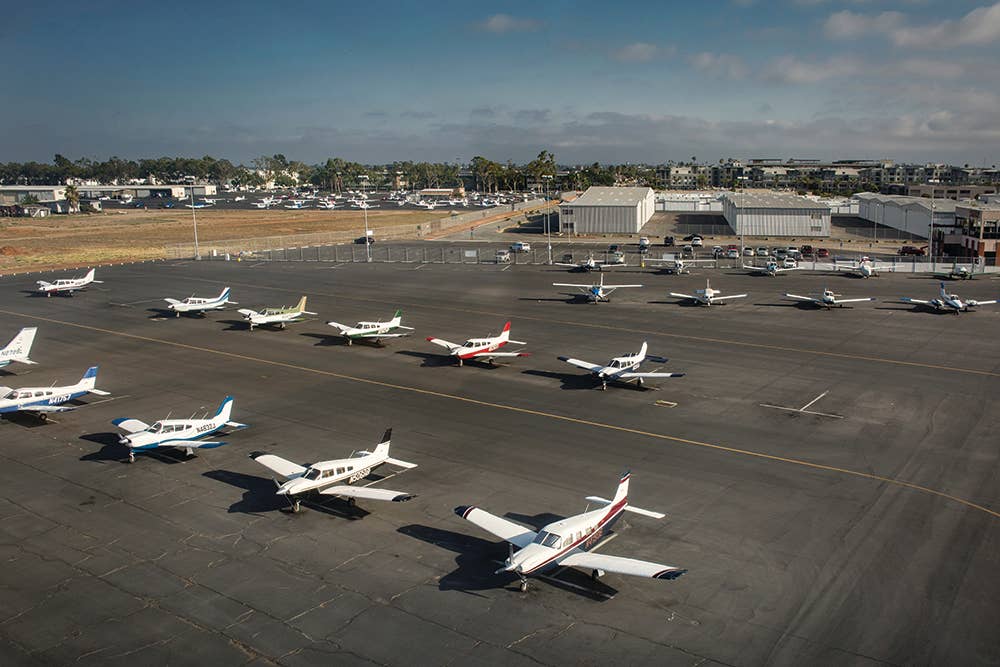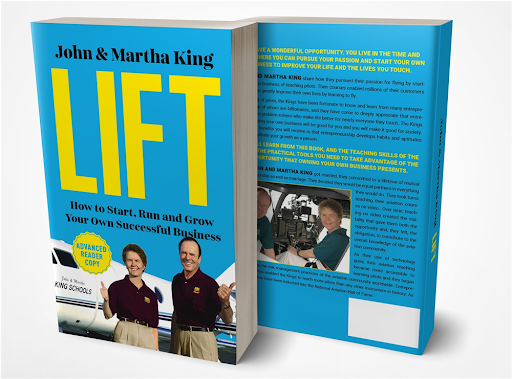Strike the Right CHORRD on Takeoff
It’s important to focus on risk management by scanning the conditions around you and considering any possible hazards—before takeoff.

The airport in Goodland, Kansas, felt like the epitome of a Midwestern airfield. [Credit: Martha King]
Goodland Municipal Airport felt like the epitome of what a Kansas airport would be—wide-open spaces and lots of room. John and I were taxiing for takeoff on Runway 12. The problem was that the taxiway entered the runway several hundred feet to the southeast of the runway threshold. We looked at the little stub to the northwest, and then we looked to the southeast—and it seemed like there was plenty of length remaining. At that point, we made two decisions in rapid succession that constituted poor risk management.
First, we made the decision that it wasn’t worth it to back-taxi to get all of the runway. Second, we decided that the light breeze from the northwest was not enough to be concerned with and taking off slightly downwind would be fine. After all, it would be a long taxi to the threshold of Runway 30. Plus, the Hobbs meter was running in our rented Piper Comanche.
On takeoff, as luck would have it, while we were climbing through about 500 feet, the engine slowly throttled itself back to near idle. Neither takeoff decision in itself was completely inexcusable but taken together they didn’t load the odds well in our favor.
“It is clear that John and I fell far short on situational awareness. We just weren’t focusing on risk management as a priority.”
About the only thing we did well in this case was recover from these mistakes. I pitched down and banked around the water tower to the southeast of the airport to land back on Runway 30. In retrospect, it appears that while our decisions were lousy, our recovery was actually pretty good—and our luck was amazingly good. That light tailwind became a headwind as I turned final for my emergency landing on Runway 30. However, counting on luck like that is tempting fate.
The mechanic determined that the hinge for the alternate air door had come loose, and the door had been sucked into the air intake of the engine, throttling it back just as effectively as if we had used the throttle knob. The instant we made the decision to not use all the runway available, we greatly reduced our alternatives. How much runway over the minimum required is enough? I don’t know. But then we compounded that decision by accepting a tailwind component on the takeoff. At least I didn’t botch the turnaround maneuver.
It is clear that John and I fell far short on situational awareness. We just weren’t focusing on risk management as a priority. As time has gone on, we are far more risk-aware than we used to be.
A big component of risk management is directing your attention to scan the conditions around you and considering the hazards in the situation. These days, John and I are encouraging a habit of using what we call the CHORRD attention scan (as in the chord of a wing) to help in assessing and reflecting on the situation before takeoff.
Know Your CHORRD
Here are the elements of the CHORRD mnemonic:
- C onditions: What are the current conditions?
- H azards: Are there hazards I need to think about?
- O perational changes: Do I need to make changes in my operation today as a result of those conditions
- or hazards?
- R unway required and available: For this takeoff, how much excess runway do I have, if any?
- R eturn: How would I return if I had a problem after takeoff?
- D eparture: What is my departure route if the takeoff can be continued?
A good place to start the takeoff assessment is before you get to the airplane, looking at your tablet. I like to use a map such as Google Maps to survey the area around the airport, especially when I’m flying a single-engine airplane. Where are the areas that might be suitable for an emergency landing, if I had an engine failure soon after takeoff? This is a wonderful example of where the innovation in everyday ordinary consumer technology can help you manage the risks of aviation.
I start through the CHORRD mnemonic as I approach the runup area.
I begin with a consideration of the conditions at the time, including the weather, unusual airport conditions (such as construction or closed runways that might affect an emergency return), high-traffic events (such as airshows or just a pretty day after a string of bad weather), any aircraft-maintenance issues, possible fatigue, distraction, lack of recency, or any other conditions affecting the flight.
Moving to the “H” for “hazard,” I then consider any of these conditions that might present a danger to the flight. Unforecast crosswind conditions might suggest a different flap setting. When our old Dassault Falcon 10 has been down a while for maintenance, John and I have pointed out to each other lack of recent flight experience as a hazard. Also, before a long trip, we have discussed that fatigue could become a hazard.
Operational changes are any changes I would make to mitigate the conditions or hazards we have identified. For fatigue, John and I have on occasion made the decision to pause a trip and rest for the night, once even taxiing back from the run-up area.
“Runway required” is the takeoff distance required as calculated from the manufacturer’s performance charts. “Runway available” we get from the airport diagram. When there is little margin between runway required and runway available, sometimes our discussion has us change our operating procedures by doing a short-field takeoff instead of a normal one.
Discussion of the return after takeoff differs based on whether you are in a jet or piston airplane. For a multiengine jet with an engine failure, the plan would be to fly the IFR clearance on one engine. This discussion requires reaching agreement between the pilot flying and the pilot monitoring about what the clearance specifies.
For a piston single, the discussion would describe the options after a failure of the engine. The pilot should discuss the pitch-down attitude required upon engine failure. They should also know the altitude (on the altimeter), below which there is no option to turn back to the airport, and have predetermined an area to turn toward. Above the known altitude, the pilot may have the option to return to the airport (and should have previously practiced the pitch-down and bank required to safely execute the maneuver).
The discussion should also cover the departure if there is no engine failure, including any IFR clearance. For a VFR departure, the discussion should describe the airspace, terrain and other route plans.
Such detailed takeoff planning is a far cry from the cavalier approach John and I took when we neglected to taxi back for the full runway length at Goodland and took off with a tailwind component. Today, we have the CHORRD discussion before every takeoff. The CHORRD mnemonic gives our conversation form and structure and enhances our situational awareness, which is the first step in risk management.
There is nothing that enhances your situational awareness like an engine that throttles itself back at low altitude. It is a lot more fun to get that situational awareness from a directed attention scan like the CHORRD mnemonic.

Sign-up for newsletters & special offers!
Get the latest FLYING stories & special offers delivered directly to your inbox

